Abstract
Maternal lymphocyte function, as assessed by stimulation with cells from a human lymphoid line, is normal in pregnancy. Maternal serum, however, contains immunosuppressive factor(s), demonstrable by 29 weeks of pregnancy, and having a greater effect at 36 weeks on mixed lymphocyte reactions. These immunosuppressive factor(s) block all mixed lymphocyte reactions to the same extent and are not specific towards those stimulated by paternal antigens. Anti-B cell (dr) alloantibodies, presumably directed against foetal antigens, are not uncommon in maternal serum even in early pregnancy. There is some suggestion that the presence of these antibodies in early pregnancy is associated with selective inhibition of maternal lymphocyte stimulation by paternal antigen. No correlation was found between the presence or absence of serum suppressive factors and the clinical course of the pregnancy.
Full text
PDF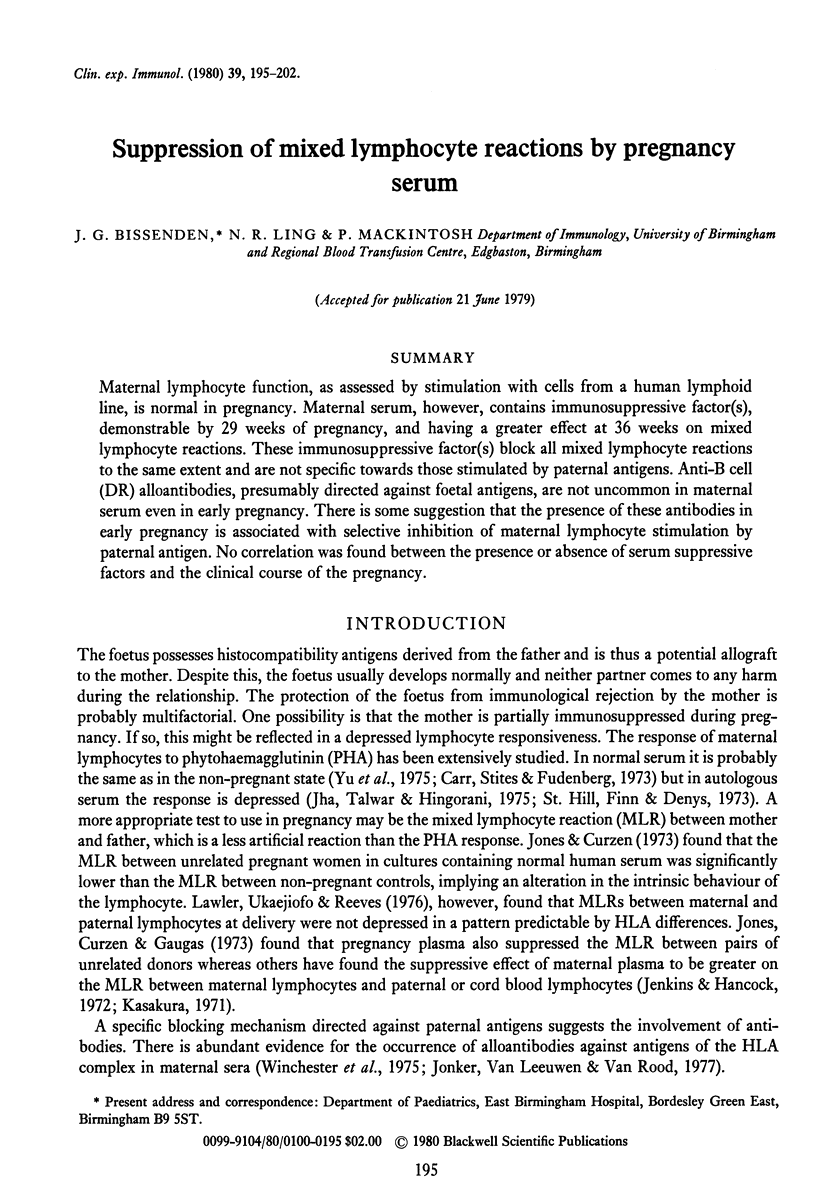
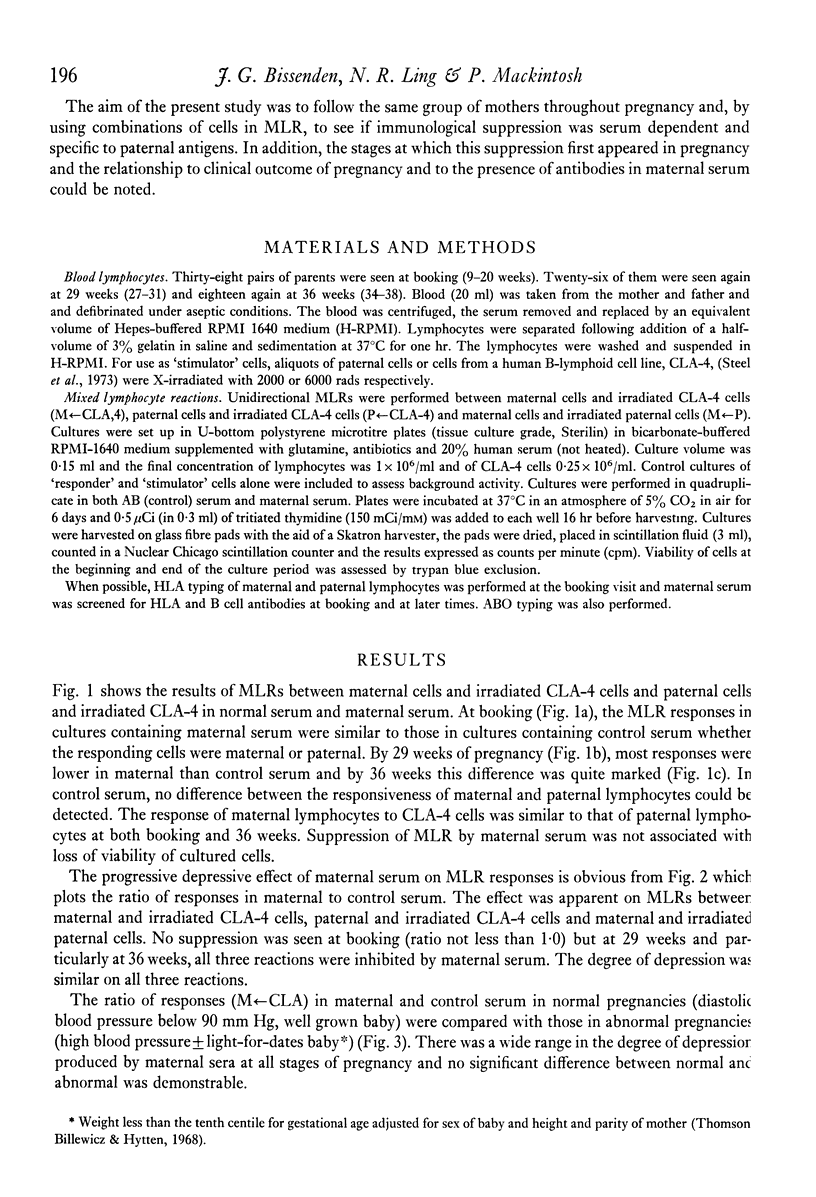
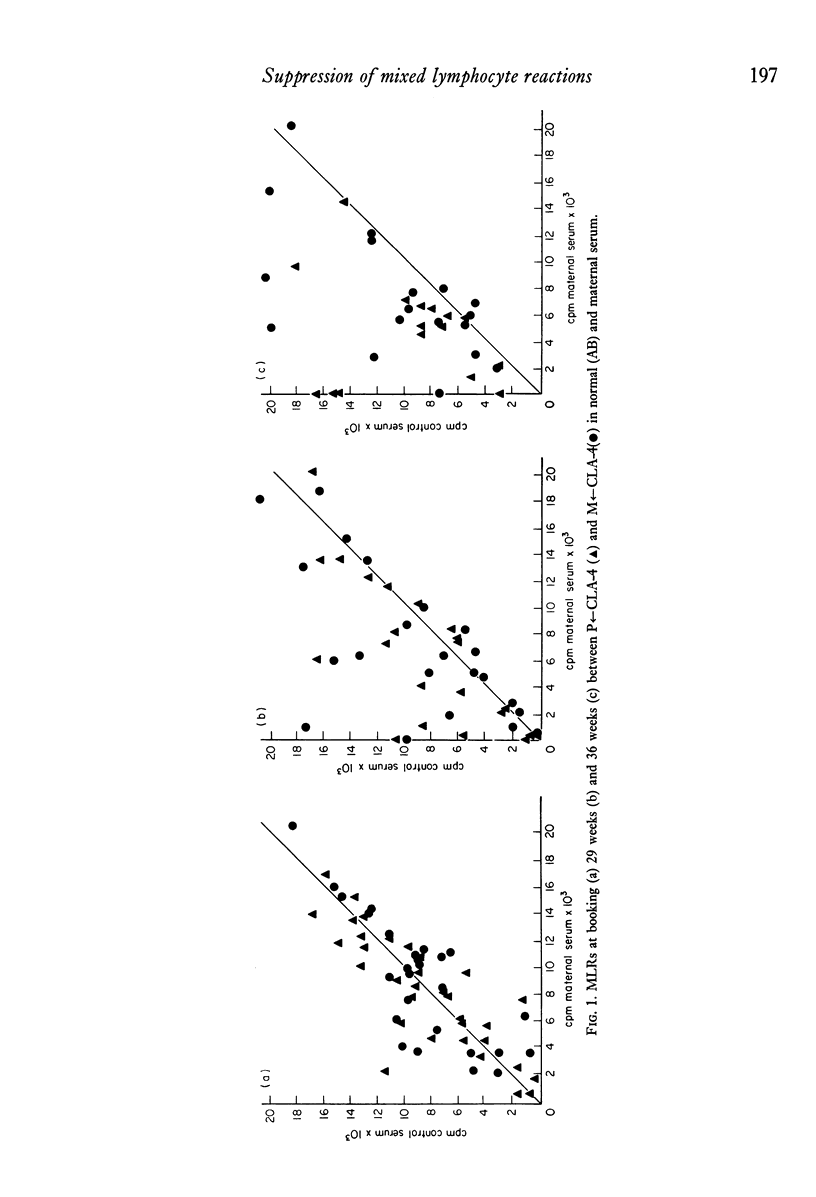
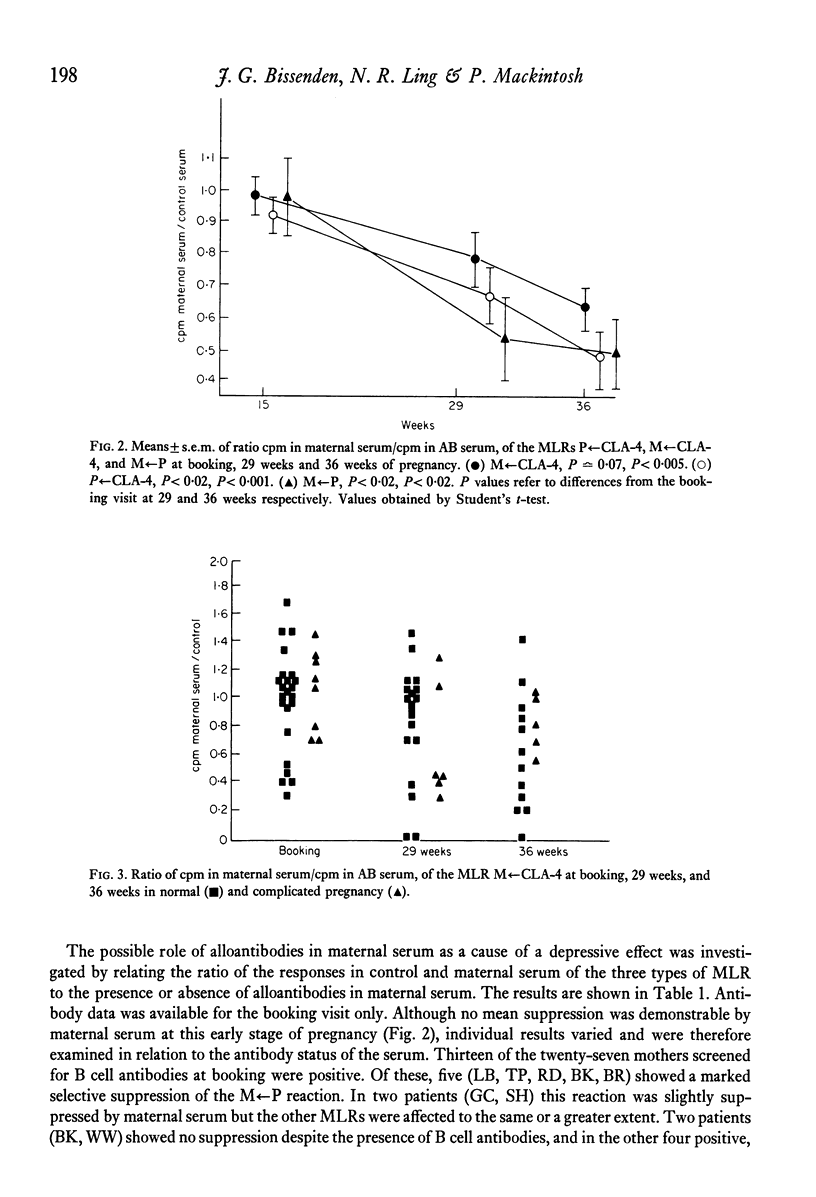
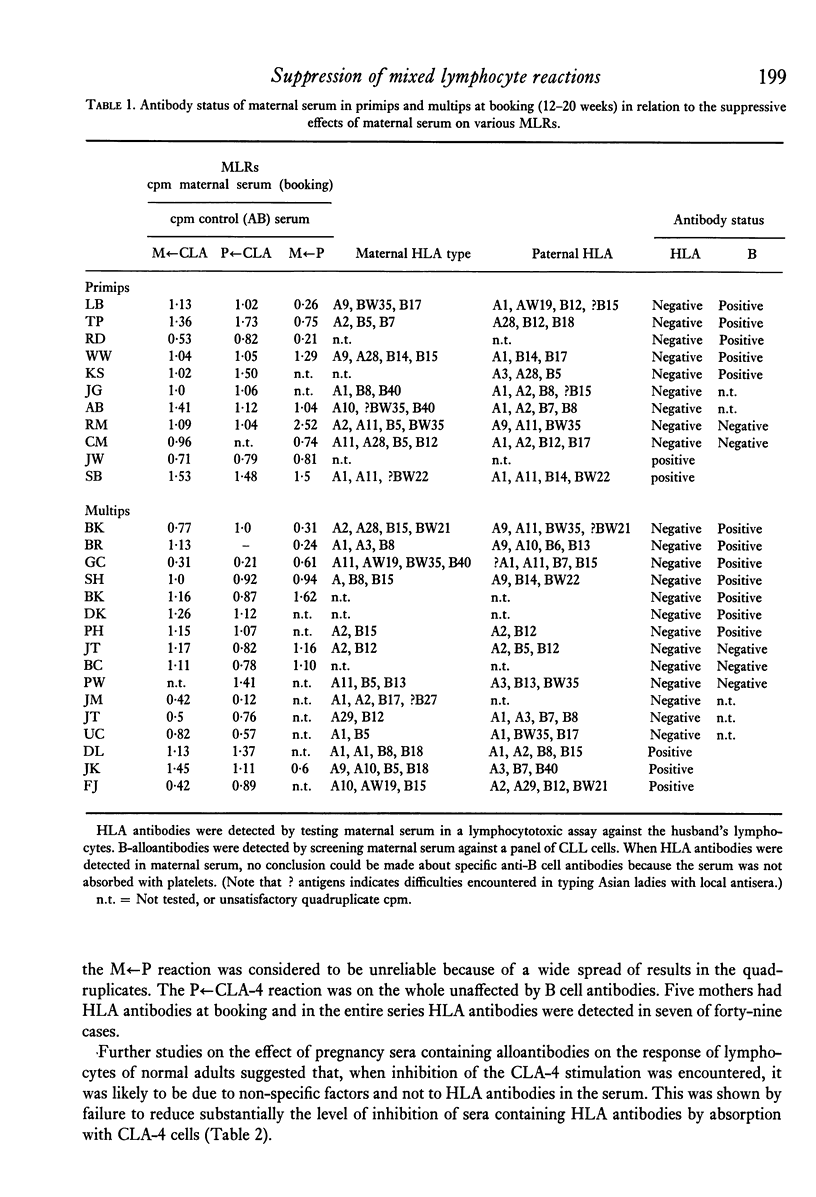
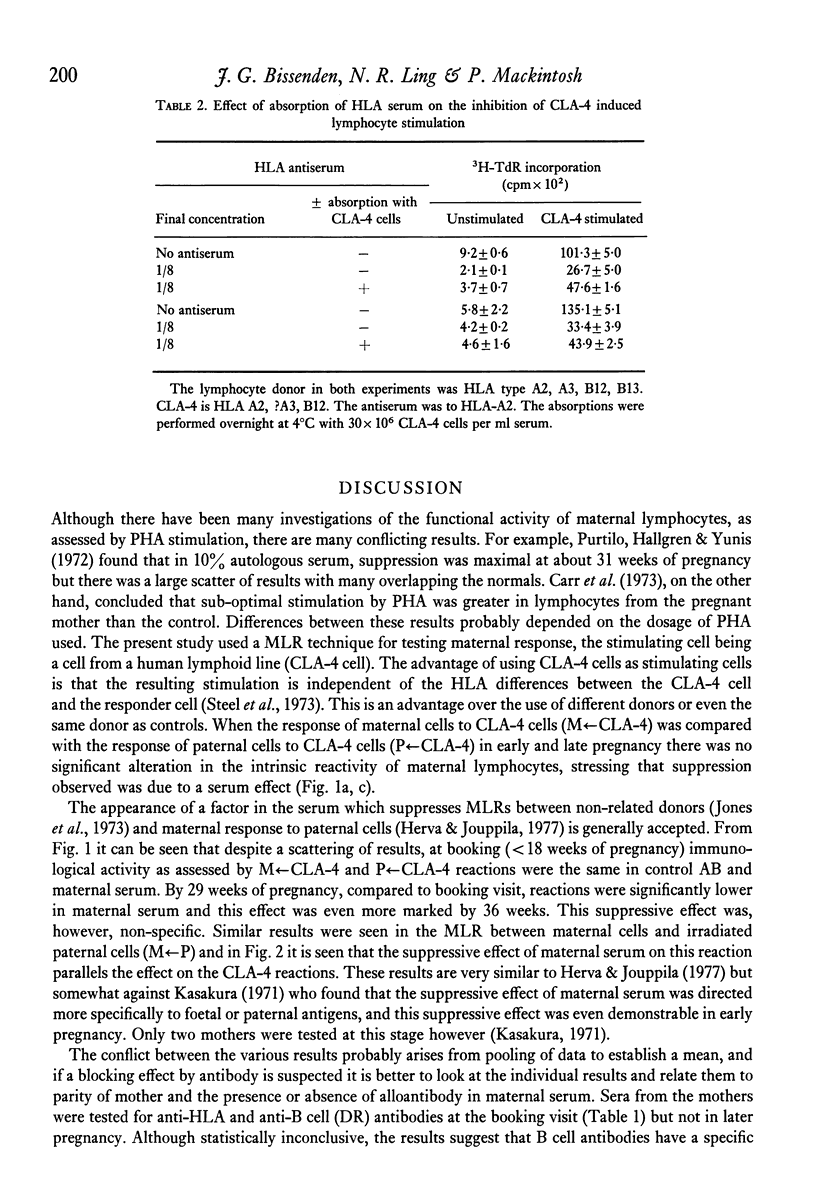
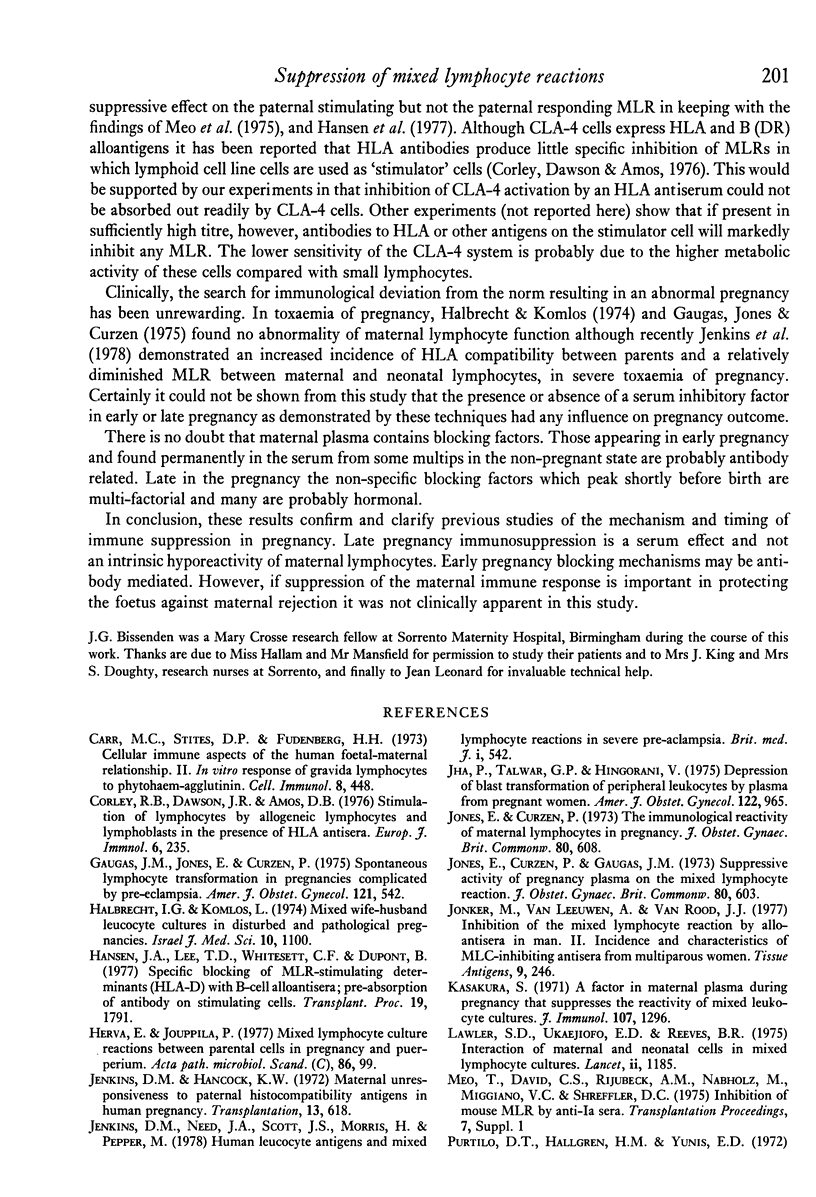
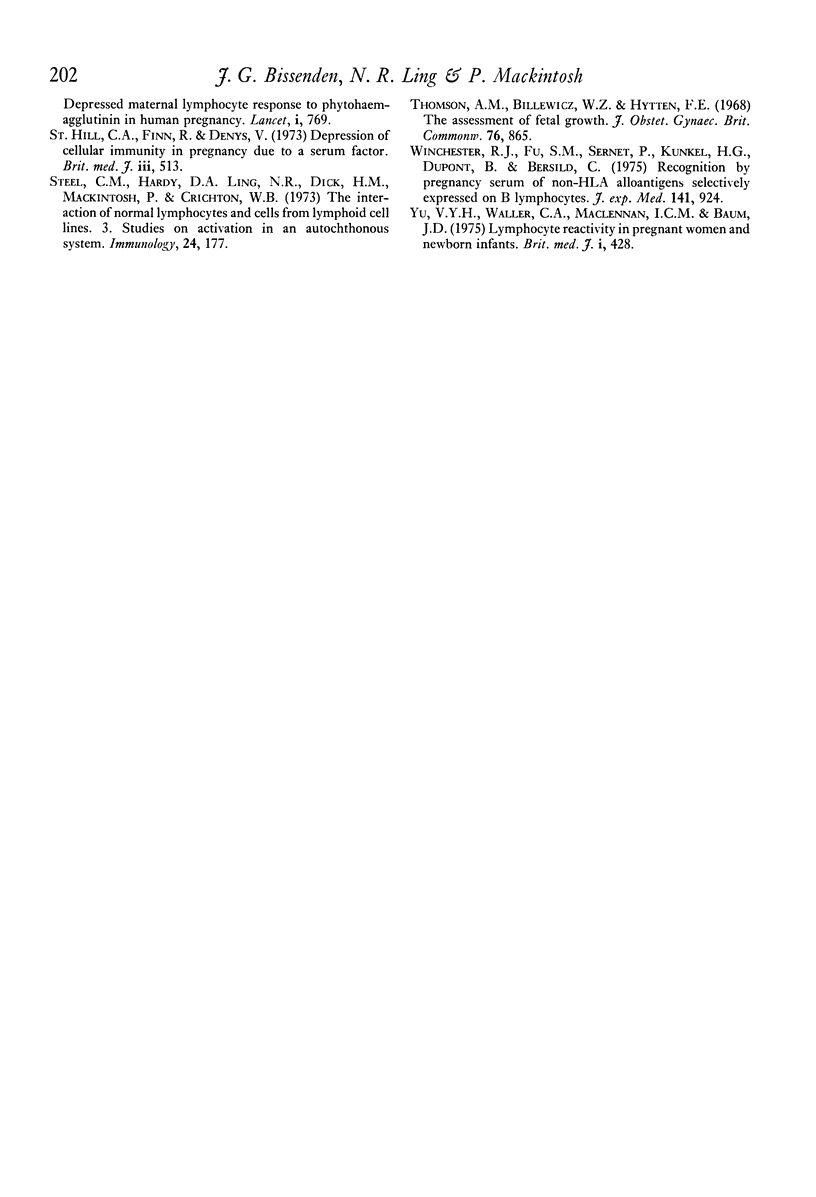
Selected References
These references are in PubMed. This may not be the complete list of references from this article.
- Carr M. C., Stites D. P., Fudenberg H. H. Cellular immune aspects of the human fetal maternal relationship. II. In vitro response of gravida lymphocytes to phytohemagglutinin. Cell Immunol. 1973 Sep;8(3):448–454. doi: 10.1016/0008-8749(73)90136-6. [DOI] [PubMed] [Google Scholar]
- Corley R. B., Dawson J. R., Amos D. B. Stimulation of lymphocytes by allogeneic lymphocytes and lymphoblasts in the presence of anti-HLA antisera. Eur J Immunol. 1976 Apr;6(4):235–240. doi: 10.1002/eji.1830060402. [DOI] [PubMed] [Google Scholar]
- Gaugas J. M., Jones E., Curzen P. Spontaneous lymphocyte transformation in pregnancies complicated by pre-eclampsia. Am J Obstet Gynecol. 1975 Feb 15;121(4):542–544. doi: 10.1016/0002-9378(75)90089-7. [DOI] [PubMed] [Google Scholar]
- Halbrecht I. G., Komlos L. Mixed wife-husband leukocyte cultures in disturbed and pathological pregnancies. Further studies. Isr J Med Sci. 1974 Sep;10(9):1100–1105. [PubMed] [Google Scholar]
- Herva E., Jouppila P. Mixed lymphocyte culture reactions between parental cells in pregnancy and puerperium. Acta Pathol Microbiol Scand C. 1977 Apr;85(2):99–106. doi: 10.1111/j.1699-0463.1977.tb03618.x. [DOI] [PubMed] [Google Scholar]
- Hill C. A., Finn R., Denye V. Depression of cellular immunity in pregnancy due to a serum factor. Br Med J. 1973 Sep 8;3(5879):513–514. doi: 10.1136/bmj.3.5879.513. [DOI] [PMC free article] [PubMed] [Google Scholar]
- Jenkins D. M., Hancock K. W. Maternal unresponsiveness to paternal histocompatibility antigens in human pregnancy. Transplantation. 1972 Jun;13(6):618–619. [PubMed] [Google Scholar]
- Jenkins D. M., Need J. A., Scott J. S., Morris H., Pepper M. Human leucocyte antigens and mixed lymphocyte reaction in severe pre-eclampsia. Br Med J. 1978 Mar 4;1(6112):542–544. doi: 10.1136/bmj.1.6112.542. [DOI] [PMC free article] [PubMed] [Google Scholar]
- Jha P., Talwar G. P., Hingorani V. Depression of blast transformation of peripheral leukocytes by plasma from pregnant women. Am J Obstet Gynecol. 1975 Aug 15;122(8):965–968. doi: 10.1016/0002-9378(75)90357-9. [DOI] [PubMed] [Google Scholar]
- Jones E., Curzen P., Gaugas J. M. Suppressive activity of pregnancy plasma on the mixed lymphocyte reaction. J Obstet Gynaecol Br Commonw. 1973 Jul;80(7):603–607. doi: 10.1111/j.1471-0528.1973.tb16033.x. [DOI] [PubMed] [Google Scholar]
- Jones E., Curzen P. The immunological reactivity of maternal lymphocytes in pregnancy. J Obstet Gynaecol Br Commonw. 1973 Jul;80(7):608–610. doi: 10.1111/j.1471-0528.1973.tb16034.x. [DOI] [PubMed] [Google Scholar]
- Jonker M., van Leeuwen A., van Rood J. J. Inhibition of the mixed leukocyte reaction by alloantisera in man. II. Incidence and characteristics of MLC-inhibiting antisera from multiparous women. Tissue Antigens. 1977 May;9(5):246–258. doi: 10.1111/j.1399-0039.1977.tb01115.x. [DOI] [PubMed] [Google Scholar]
- Kasakura S. A factor in maternal plasma during pregnancy that suppresses the reactivity of mixed leukocyte cultures. J Immunol. 1971 Nov;107(5):1296–1301. [PubMed] [Google Scholar]
- Lawler S. D., Ukaejiofo E. O., Reeves B. R. Interaction of maternal and neonatal cells in mixed-lymphocyte cultures. Lancet. 1975 Dec 13;2(7946):1185–1187. doi: 10.1016/s0140-6736(75)92663-x. [DOI] [PubMed] [Google Scholar]
- Purtilo D. T., Hallgren H. M., Yunis E. J. Depressed maternal lymphocyte response to phytohaemagglutinin in human pregnancy. Lancet. 1972 Apr 8;1(7754):769–771. doi: 10.1016/s0140-6736(72)90522-3. [DOI] [PubMed] [Google Scholar]
- Steel C. M., Hardy D. A., Ling N. R., Dick H. M., Mackintosh P., Crichton W. B. The interaction of normal lymphocytes nd cells from lymphoid cell lines. 3. Studies on activation in an autochthonous system. Immunology. 1973 Jan;24(1):177–189. [PMC free article] [PubMed] [Google Scholar]
- Thomson A. M., Billewicz W. Z., Hytten F. E. The weight of the placenta in relation to birthweight. J Obstet Gynaecol Br Commonw. 1969 Oct;76(10):865–872. doi: 10.1111/j.1471-0528.1969.tb15722.x. [DOI] [PubMed] [Google Scholar]
- Winchester R. J., Wernet P., Kunkel H. G., Dupont B., Jersild C., Fu S. M. Recognition by pregnancy serums of non-HL-A alloantigens selectively expressed on B lymphocytes. J Exp Med. 1975 Apr 1;141(4):924–929. [PMC free article] [PubMed] [Google Scholar]
- Yu V. Y., Waller C. A., Maclennan I. C., Baum J. D. Lymphocyte reactivity in pregnant women and newborn infants. Br Med J. 1975 Feb 22;1(5955):428–432. doi: 10.1136/bmj.1.5955.428. [DOI] [PMC free article] [PubMed] [Google Scholar]


